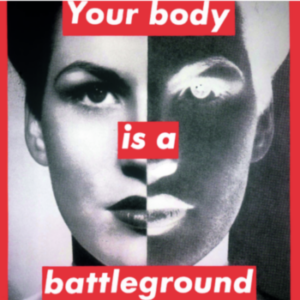The fourth chapter of Patricia Hill Collins’ book reminded me of a situation that arose in Cali-Colombia in 2011. This is a city made up of 51% of people of color, and approximately 40% of mixed-race people. (I don’t remember the precise statistics) In a major magazine, they published an image of some very wealthy white women in the city. They are sitting in a magnificent position, next to the bench of a luxurious apartment, located in one of the most expensive areas of the city. The wealth of several families that live there comes from sugar cane estates, which were originally supported by the labor of black slaves. The magazine that published the photo probably did not notice that in the reflection of the window, you could see a black woman, in a maid outfit, waiting for the photo to be finished to approach with drinks. For obvious reasons, this image aroused a heated discussion about the problems of race, social condition and gender, which have been maintained since the colony and which are not usually discussed in the spaces of these wealthy people. https://www.semana.com/nacion/articulo/la-foto-discordia/250614-3/ [semana.com] in this link appears the image to which I refer.
Unruly Bodies
A MALS Summer Course




Capitalism was built on racism. The slave trade was about money and power. Slavery was making money on the backs of free labor—slave owners raping slaves to reproduce more children to be sold. Even before then, the European and later Americans stealing Native American land so they can produce products to become rich and powerful. White people created systemic racism that people of different ethnic and racial groups are there to please and serve white people. All said above make people on the upper level of the hierarchy of power uncomfortable with why they can get and hold their power.
For two reasons, it was interesting to experience this blog post as text first followed by the image it described. First, I had imagined that the reflection would be super subtle–a faint trace that I’d have to squint to see, not the visible, opaque bodies that dominate the background. Second, since I came to the image with Yohanna’s analysis already in mind, I saw additional layers of the image that were equally disturbing. The photograph’s symmetry and the uniformity suggests a permanence to this racial class divide. The white, rich women are all interchangeably thin, wear a class uniform, and sit engaging with the viewer, while the black women are interchangeably fuller, wear a class uniform, and stand in silent profile. More reminiscent of William Lee depicted in portraits of George Washington, the inclusion of the black women by the photographer and editors, whether consciously or subconsciously, depicts them more as decorative objects indicative of white wealth than overlooked reflections.
I agree with Kelly that after reading your typed description, I did not imagine that the reflection would be that visible. It’s almost crisp, showing off the gleaming and spotless windows – no doubt indicating a sign of wealth and status. It almost makes you wonder if this was intentionally done to show them off as a form of exploitation; related to the theme of objectification that we see in Patricia Hill Collin’s piece.
I must agree with Kelly and Amanda, I too expected to see a blurred image of these Black women, there but not there. The clarity of their images, reflected, book-ending this group of white women brings to mind the invisibility” of the Black woman as mentioned by Hill Collins in Black Feminist Thought. Either the photographer/magazine editors did not “see” these Black women waiting to be in service, or they were blind (did not care) about the racist implications of the imagery they were portraying, This also brings to mind the “othering” as Bell Hooks mentions, the visual image of Other, to quote, “often their faces are blurred by the camera, a strategy which ensures that readers will not become more enthralled by the images of Otherness than those of whiteness”. The “accidental” posing of these Black women highlights the whiteness of the women in front by showcasing how different they are from the “other”. It is very hard to believe that this was not in some way intentional.
Yes, this image does reflect many of the ideas presented in the Collins reading. I agree with Amanda that it makes one wonder if this was done intentionally. It’s hard not to notice the black woman in the background. To me, it is interesting that even after women started wearing pants in the United States, the maid outfit still constitutes a dress even though there is a lot of physical activity involved with being a maid. I wonder if the insistence on maids wearing a dress instead of pants as seen in hotels, as well as housemaids is a form of control to keep them in their place.
Thank you for bringing up Latin America. I’m most familiar with Mexico, where my wife grew up. It makes the United States look like a progressive wonderland by comparison.
I wonder what, specifically, about Mexican society has allowed for far, far slower progress on colorism/racism. After all, the United States is still a white-majority country, and Mexico is not. Yet if you look at the composition of Mexican political parties, top business interests, and entertainment industries, light-skinned individuals dominate. All this in a country whose national hero Benito Juarez was an indigenous Zapotec who was president in the 1850s!—and whose national icon is the brown-skinned Virgen de Guadalupe!
Wondering how the situation compares to that of Colombia.